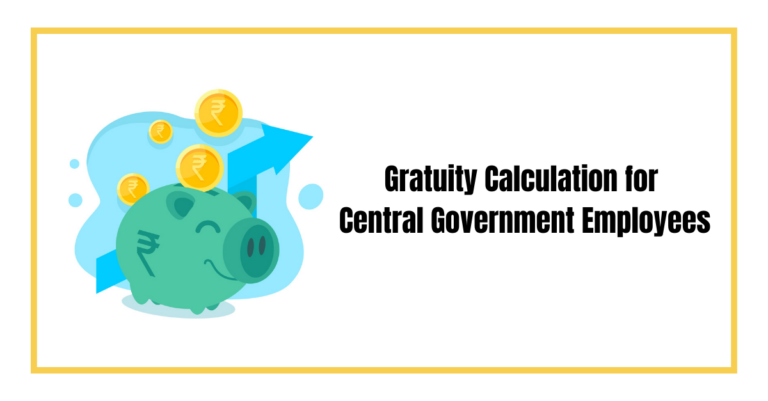This article talks about how Anganwadi workers who were first deprived of gratuity and not seen as full-time government employees, finally won the SC order for being eligible for gratuity.
Gratuity For Anganwadi Workers: Post-independence, the early years in India were of nation-building, where the young and old wallowed in the economy resembling a sinking ship with a moth-eaten sail. ‘‘India was pushed into an imaginary waiting room of history – much like a child asked to wait her turn, in this case for political modernity.” Often an ignored child never convalesces fully from an ailment as severe as neglect, impoverishment, malnourishment and mortality. This aggravated over the years and stood as a huge falter step and impediment that needed to be done with immediately.
Integrated Child Development Services (ICDS)
The Government of India finally sought to put a check on growing sectionalized neglect of infants and maternal mortality rates that were sky-rocketing by then. It aimed to supply a secure foundation for constructive programmes in mental hygiene, education, and family and group living for children and women and men. Integrated Child Development Services (ICDS) scheme, the world’s largest community-based programme, joined hands with the Government of India to pitch some of the most vital functionaries of the scheme and hence, the nation – the Anganwadi Workers– against the chronic deterioration of women and child health in the country.
Anganwadi Workers, Who Are They and What Do They Do?
The Anganwadi worker is a community based front line worker (of the ICDS Program). They play a crucial role in supporting households, particularly low-income families, by providing childcare, health and nutrition, education, supplementary nutrition, immunisation, health check-up and referral services. In other words, it is an Indian government welfare programme that provides food, pre-school education, and primary healthcare to children under 6 years of age and their mothers. The scheme was started on 2 October 1975 and aims at the holistic development of both the mother and the child. It is a Centrally-Sponsored scheme in association with ICDS.
The Main Objectives of the Scheme (under the Ministry of Women and Child Development) are:
- Improvement in the health and nutritional status of children (0–6 years) and pregnant and lactating mothers, while raising their standard of living
- Increased and comfortable accessibility to basic amenities
- Reduction in the incidence of their child mortality
- Encouraging parents and children through education drives and reducing school dropout and child labour
- Catering to various needs of differently-abled, and developing sound health habits among adolescents
- Provision of a firm foundation for proper psychological, physical and social development of the child.
- Enhancement of the maternal education and capacity to look after her own health and nutrition and that of her family.
- Supplementary nutrition – Take Home Ration (THR), Hot Cooked Meal and morning snacks and holds importance for many vulnerable households as it impacts the nutritional outcome of the children.
- Small scale cottage industry development, encouraging financial independence among women
However, unfortunately, Anganwadis often lack adequate infrastructure.
Revamping of Anganwadis
Continuous efforts have been made by the Ministry of Women & Child Development for improving the condition of Anganwadi centres and Anganwadi Workers across the country.
- There are over 4 lakh new Anganwadi Centres (AWC) across the country (under MNREGS as well as ICDS scheme)
- The workers have been all provided with smartphones to deliver quicker and more efficient services
- Anganwadi Workers are provided with training for 26 working days.
- During this job training, the understanding and skills of Anganwadi Workers on various Acts, Policies, Programmes related to women and children, are honed and polished and revised.
- POSHANTRACKER- an ICT enabled platform application is used to track the real-time management of Anganwadi services all over the country.
Why Prioritising the Welfare of Anganwadi Workers Should Be of Prime Importance?
The program began in just 33 blocks. Over the last 25 years, it expanded progressively and at present, it has 5614 projects covering community development blocks and urban slums; over 60 million children below the age of 6 years and over 10 million women between 16 and 44 years of age 2 million lactating mothers. This would have been impossible to accomplish if not for the sincerest efforts of Anganwadis Workers.
Of late, a widespread and heart-rending account of Anganwadi Workers working and living in poor conditions themselves, during and after their terms of service, surfaced.
Demanding better pay and work conditions, they said “We’re taken for granted and ignored, why do we not deserve to be called government employees? We work very hard and fulfil all our responsibilities and duties on time.”
Legal Course and Gratuity Act of 1972
This brought to light a 16-year-old legal battle, between the center and the Anganwadi workers, that mentioned that the gratuity for anganwadi workers is not entitled .
The Anganwadis are vested with all-pervasive duties, spanning from the identification of the beneficiaries, cooking nutritious food, conducting preschool for kids, and implementing important provisions related to children, pregnant women as well as lactating mothers. It is thus, not at all possible to consider this a part-time job. This decision should be allowed no contention.
Entitlement to Gratuity for Anganwadi Workers and Helpers
Hence, it has been established that over 25 lakh AWWs and AWHs deserve a gratuity, to ensure a well-sustained lifestyle. To uplift the very lives out of poverty, that had once served the ailing and the neglected, of the country is imperative for inclusive growth. It’s the collective duty of the country and the central government to provide for and sustain the workers, post their periods of service.
After the Supreme Court ruled out the plea of not offering a gratuity to Anganwadi Workers, huge and rightful support poured into uplift the standard and working conditions of these labours and workers.
- The vital services at the grassroots level of these workers and helpers are commendable
- it should be recognized that AWWs are often, ultimately the bridge between the government and beneficiaries under the National Food Security Act and the Integrated Child Development Scheme (ICDS).
- Considering the nature of duties specified, the Anganwadis are full-time employees of the government besides being its extended arm for the successful implementation of the NFSA.
Why Do Workers Deserve Unanimous Support for Demanding Gratuity?
If workers are made to fight so hard and for so long for the recognition of their right to be paid gratuity under the Payment of Gratuity Act, 1972, it can severely affect a lot of the country’s smooth sailing operations in all block, village and district levels.
These Anganwadi Workers are the backbone of the Integrated Child Development Scheme and the government should be well-warned that
- a lack of motivation among them would have a crippling effect on the multiple tasks that are being performed
- A relook into their service conditions is vital to ensure their active participation and
- the thriving will to work and contribute and excel in the job they perform tirelessly and incessantly as front-line workers.
- “Socialised childcare contributes to the liberation of women.”
- Owing to the services of the AWWs there has been an increase in financially independent women,
- a strong base of the scheme beneficiaries identified and nurtured by these very workers.
Self -Motivated Participation During COVID-19, as Front-Line Workers
During the pandemic, with limited resources, and adverse working conditions themselves (lack of self-protection equipment for front line workers),
- Anganwadi workers weren’t just keen to beat undernutrition prevailing due to the unemployment but the COVID-19 outbreak in the country as well.
- Educational drives, self-motivated initiatives of AWWs in COVID-19 awareness generation, and
- going an extra mile to avail masks,
- food supply and meticulous management and
- labour dispensing services were greatly lauded by the nation.
- Of late, most vaccination drives too, are facilitated through the AWCs.
Conclusion – Gratuity For Anganwadi Workers
It is not only justified but also a firm obligation on the entire country, to not fail these workers who have stood firmly by the needs of the underprivileged, in their times of need. Just because the workers do not hold civil posts, it Is a grave act of depriving the well-deserving group of AWH and AWW of a regular salary. The entitlement to gratuity is seen as a big win for labour unions and for the Anganwadi workers who were expected to render important services to the society while being paid very meagre remuneration, and almost zilch life-savings security after service.
Read more,










